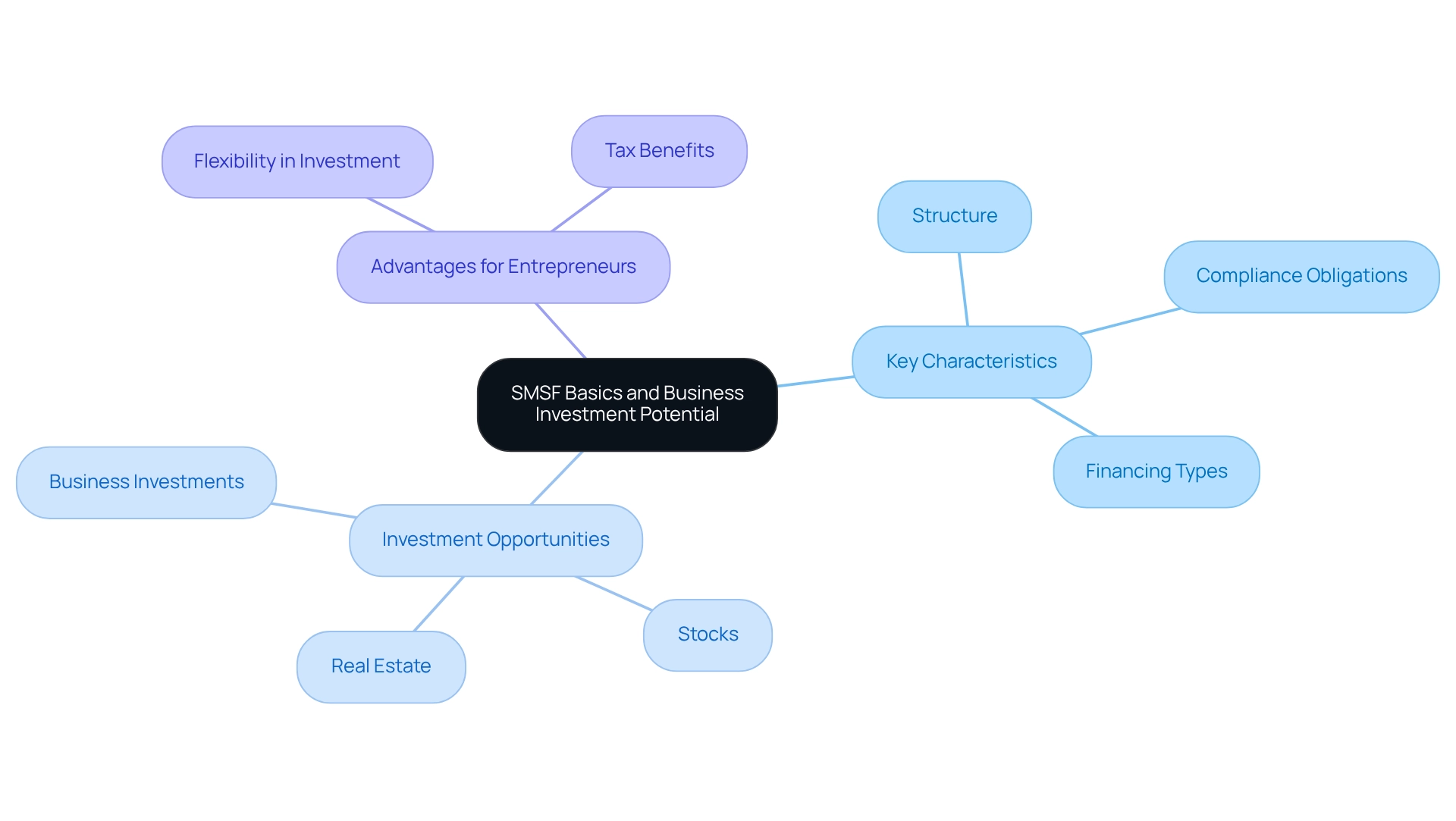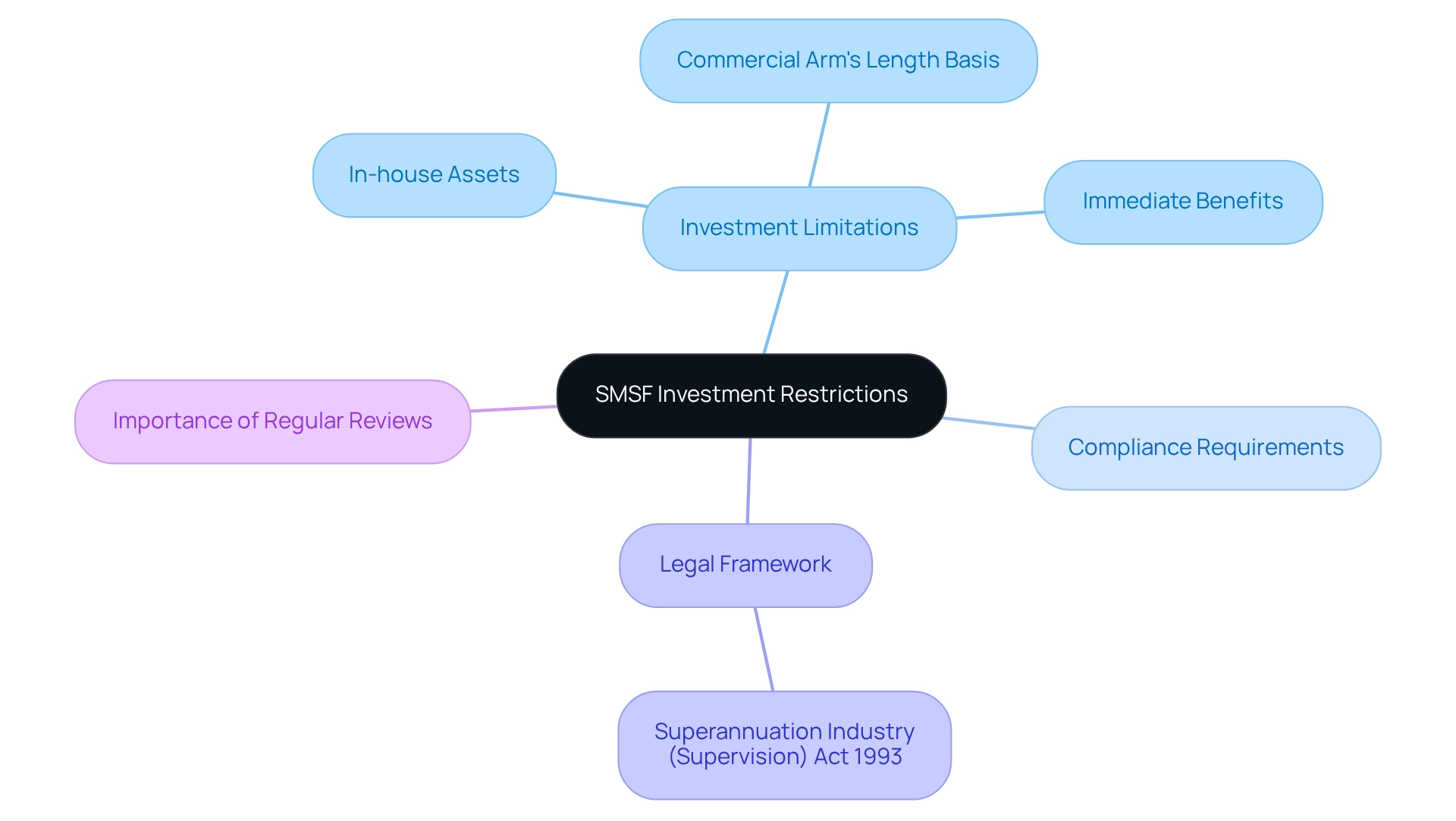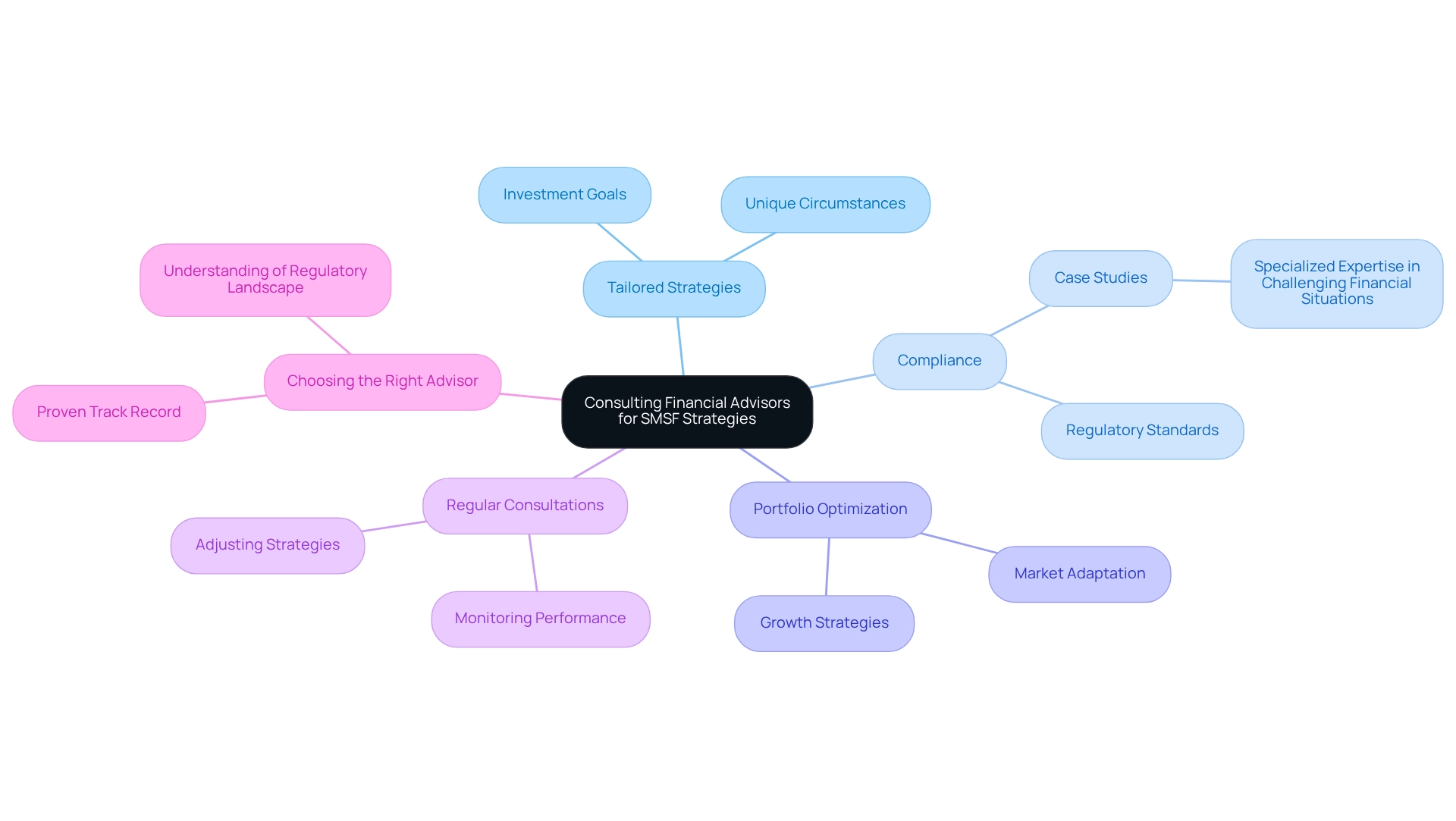Overview
Self-Managed Superannuation Funds (SMSFs) present a viable opportunity for investment in businesses, provided they comply with specific regulations and align their investments with established financial strategies. It is crucial to understand key considerations that govern these investments.
- Immediate benefits to members are strictly prohibited.
- All transactions must occur at arm's length to ensure commercial viability.
- Consulting financial advisors is essential for effectively navigating these complexities and making informed decisions.
Introduction
In the realm of retirement planning, Self-Managed Super Funds (SMSFs) stand out as a formidable tool for savvy investors eager to take charge of their financial future. These private superannuation funds empower individuals to manage their retirement savings and unlock a diverse array of investment opportunities, including real estate and businesses. As entrepreneurs increasingly recognize the potential of SMSFs to fuel their ventures, grasping the intricacies of these funds becomes paramount.
From navigating compliance requirements to evaluating investment opportunities, this article delves into the foundational aspects of SMSFs. It offers insights into how these funds can be strategically leveraged for business growth, all while ensuring adherence to regulatory frameworks.
Are you ready to explore how SMSFs can transform your retirement planning and business strategy?
Understand SMSF Basics and Business Investment Potential
A Self-Managed Superannuation Fund (SMSF) is a private retirement fund that you oversee, granting you direct control over your retirement savings. SMSFs offer a diverse array of financial opportunities, including real estate, stocks, and the potential of how can a SMSF invest in a business, making them a potent resource for entrepreneurs. Understanding whether a SMSF can invest in a business for financing is crucial, as it enables you to leverage your retirement savings to support your entrepreneurial ambitions.
To effectively utilize an SMSF, it’s essential to grasp its key characteristics, such as its structure, compliance obligations, and the types of financing permitted under Australian law. For instance, as of 2025, SMSFs have witnessed a significant surge in financial activity, with numerous entrepreneurs recognizing the benefits of using their retirement funds for business ventures. Recent data indicates that the average assets per consultant in the SMSF sector rose to $62.29 million, reflecting a growing confidence in SMSF allocations.
Experts emphasize the advantages of SMSFs for business financing. Financial professionals assert that SMSFs not only provide flexibility in investment options but also present potential tax benefits that can enhance overall returns. Successful case studies illustrate how SMSFs have been effectively employed to invest in both real estate and businesses, raising the question of how can a SMSF invest in a business, showcasing their versatility.
By familiarizing yourself with the fundamentals of SMSFs and understanding how to navigate compliance, you can position your fund as a strategic asset for business growth. This foundational knowledge will empower you to explore innovative methods to leverage your retirement savings, ultimately bolstering your entrepreneurial endeavors and enhancing your financial future.

Review SMSF Investment Restrictions and Compliance Requirements
Before making any financial decisions, comprehending the limitations governing Self-Managed Superannuation Funds (SMSFs) is essential. The Australian Taxation Office (ATO) stipulates that SMSFs cannot invest in assets that provide immediate benefits to members, and in-house assets must not exceed 5% of the fund's total assets. Furthermore, all investments must be conducted on a commercial arm's length basis, ensuring that transactions reflect true market value. Knowledge of the Superannuation Industry (Supervision) Act 1993 (SIS Act) is crucial, as it defines the legal framework for SMSF operations. Regular reviews of compliance requirements are vital to protect your fund from potential penalties.
Recent data indicates that 85% of self-managed superannuation fund members are aged 45 or older. This statistic highlights the importance of strategic planning and adherence to regulations as these individuals manage their retirement savings. By remaining aware of ATO compliance criteria and restrictions on allocations, trustees can make prudent choices that align with their long-term monetary objectives.

Evaluate Business Investment Opportunities Against SMSF Criteria
Assessing whether a self-managed super fund can invest in a business requires a thorough evaluation against established funding opportunities. Begin by confirming that the allocation aligns with your self-managed super fund's financial strategy, which should be periodically reviewed to adapt to any changes in your financial objectives. It is essential to analyze the potential risks and rewards associated with the funding, ensuring it aligns with the fund's long-term goals.
Adhering to self-managed superannuation fund regulations is crucial. For example, when considering an investment in a private firm, your self-managed super fund must not hold a controlling interest, as this could violate compliance regulations. Conducting comprehensive due diligence is vital to ensure that the venture is both sound and compliant.
Recent trends reveal a notable shift in self-managed super fund strategies, with direct investments in non-residential real estate—such as office buildings, warehouses, and retail spaces—growing by 35%, from $68.4 billion in 2018-19 to $92.5 billion in 2022-23. This growth signifies a strategic approach by self-managed super fund trustees, who are increasingly confident in the property market. Additionally, a report indicates that 74% of self-managed superannuation fund assets are concentrated in five asset categories, with Australian listed shares comprising 27.5% of total assets. This focus suggests that trustees are making informed decisions based on market performance and potential returns, especially when considering if a SMSF can invest in a business.
As you evaluate business funding opportunities, consider these insights and ensure that your financial decisions align with both compliance obligations and your fund's long-term financial strategy. Finance Story can assist you in crafting a compelling argument for compliance and help you identify the right lender for your commercial real estate needs. For the latest updates on self-managed super funds, visit the self-managed super fund newsroom and subscribe to the monthly self-managed super fund newsletter to stay informed about regulations and trends.

Consult Financial Advisors for Tailored SMSF Investment Strategies
Hiring a financial advisor with expertise in self-managed super funds (SMSFs) is essential for crafting strategies tailored to your unique circumstances while ensuring compliance with regulatory standards. A qualified advisor can assist you in developing a comprehensive financial strategy that aligns with your retirement aspirations, identifying suitable opportunities and evaluating associated risks. Notably, commercial property ventures present fewer limitations compared to residential properties, making them an attractive option for self-managed superannuation fund investors. Given that the average age of self-managed superannuation fund members is 61, effective retirement planning is imperative.
Financial advisors significantly enhance self-managed superannuation fund strategies. Research indicates that self-managed super fund investors who consult with advisors are more likely to achieve their investment goals, with a considerable percentage reporting improved portfolio performance. Advisors can help optimize your portfolio for growth, ensuring it adapts to changing market conditions. Finance Story will assist you in building a compelling case for compliance and finding the right lender for your commercial real estate needs.
When selecting a financial advisor, prioritize those with a proven track record in self-managed superannuation fund management and a thorough understanding of the regulatory landscape. Regular consultations are crucial, as they allow for adjustments to your strategy in response to market fluctuations, ensuring your self-managed super fund remains compliant and effective in reaching your financial objectives. Case studies illustrate that specialized knowledge in navigating complex financial scenarios greatly enhances the likelihood of achieving desired results, underscoring the indispensable role of a financial advisor in the SMSF investment journey.

Conclusion
Self-Managed Super Funds (SMSFs) offer a distinct opportunity for entrepreneurs to seize control of their retirement savings while actively engaging in business investments. By grasping the foundational elements of SMSFs—including their structure, compliance requirements, and investment potential—individuals can strategically leverage these funds to bolster their entrepreneurial pursuits. It is crucial to understand that SMSFs not only enable diverse investment opportunities but also entail regulatory obligations that must be followed to avoid penalties and ensure sustainable growth.
Evaluating potential business investments against SMSF criteria is essential. This includes aligning investments with the fund's documented strategy, conducting thorough due diligence, and ensuring compliance with ATO regulations. As the trend of SMSFs investing in non-residential properties and various asset classes grows, there is significant potential for substantial returns, provided that investments are approached with careful consideration and informed decision-making.
Consulting with financial advisors can significantly enhance the effectiveness of SMSF investment strategies. These experts can offer tailored advice that aligns with individual retirement goals, assisting in navigating the complexities of compliance while optimizing investment portfolios. As SMSF members age, the necessity of effective retirement planning and strategic investment becomes even more critical.
In conclusion, SMSFs present a powerful tool for those seeking to intertwine retirement savings with business growth. By comprehending the intricacies of SMSFs, adhering to compliance requirements, and seeking expert guidance, individuals can position themselves for a prosperous financial future. Embracing the potential of SMSFs not only empowers personal financial management but also paves the way for innovative business ventures that can thrive in a competitive landscape.




